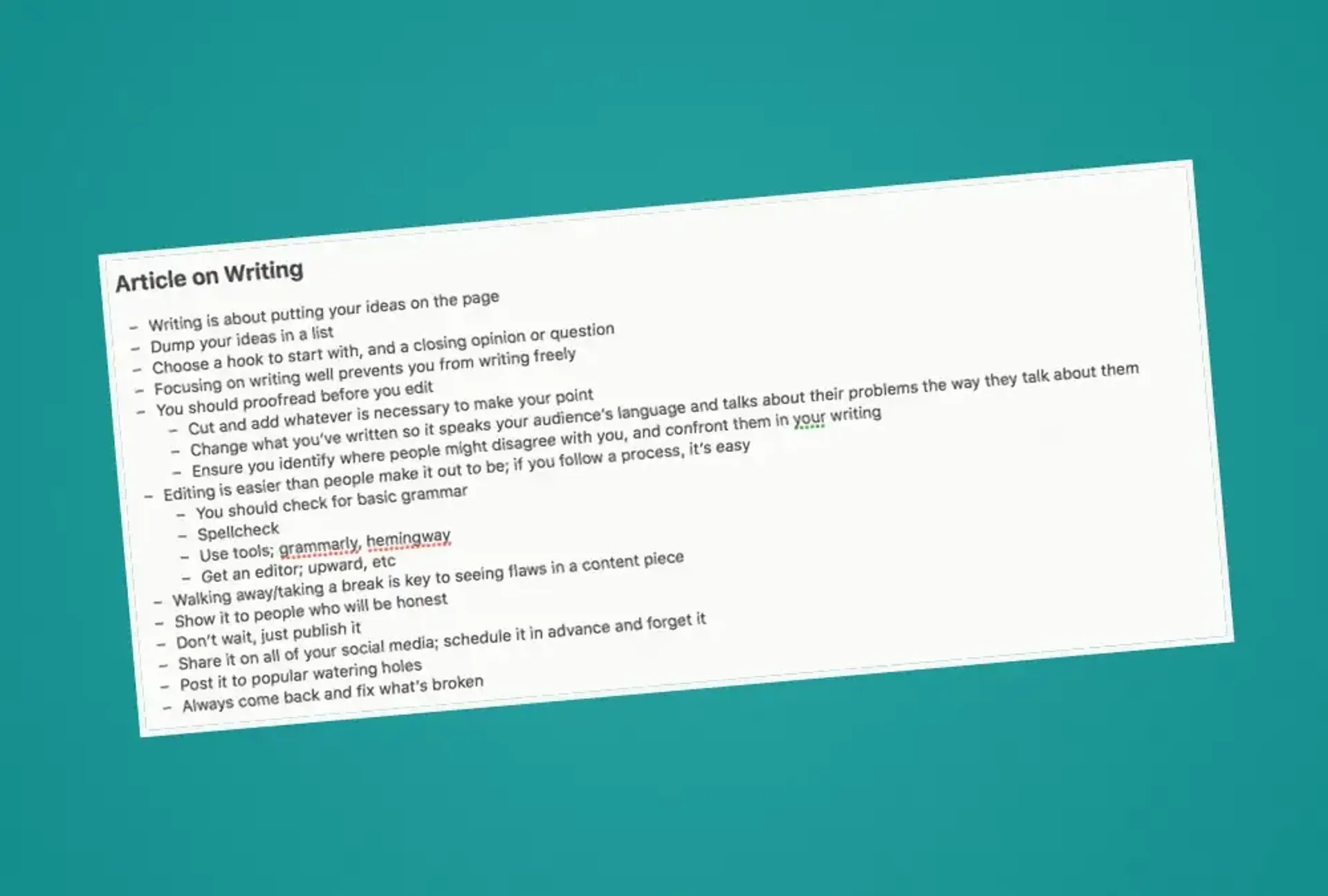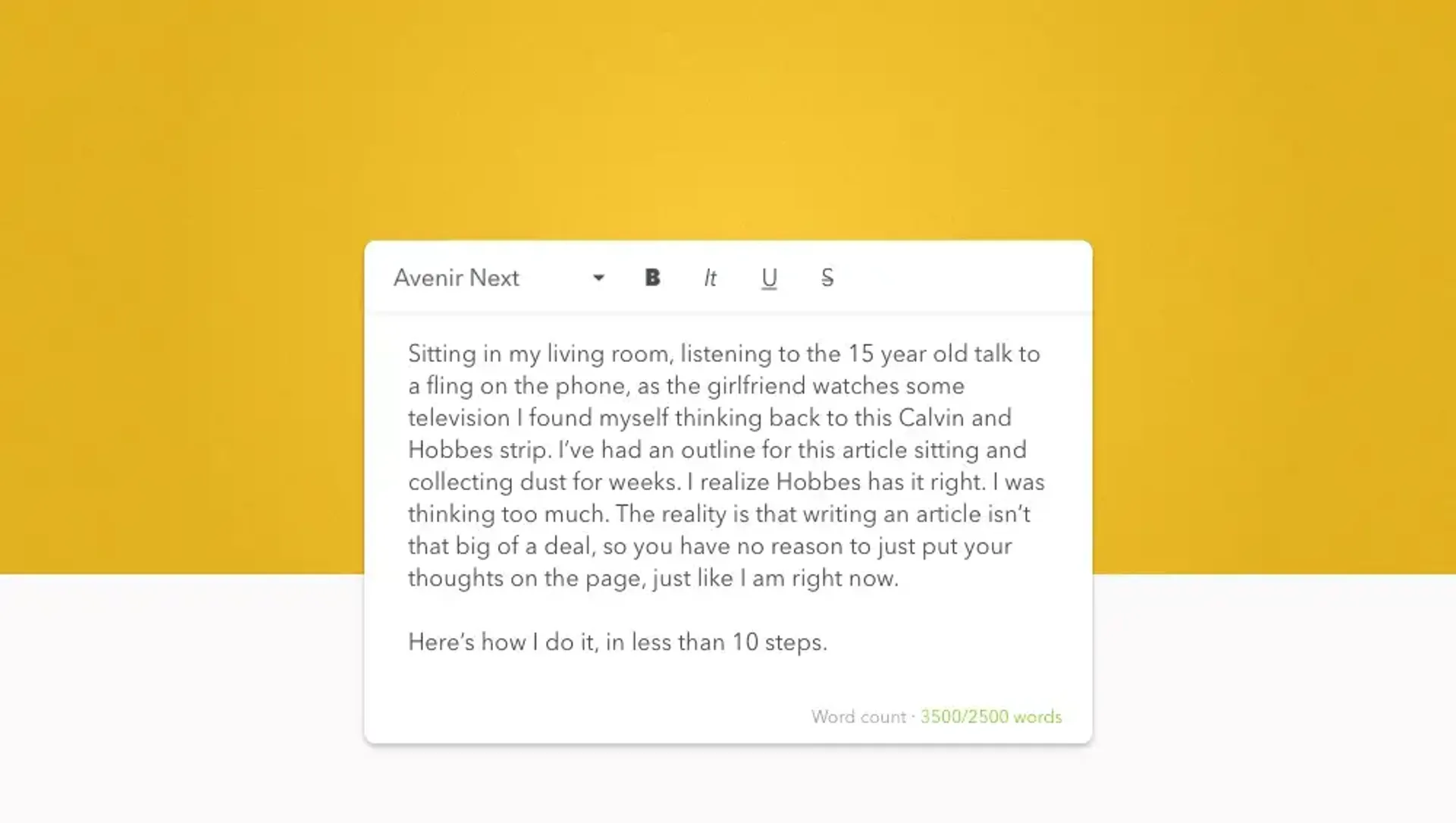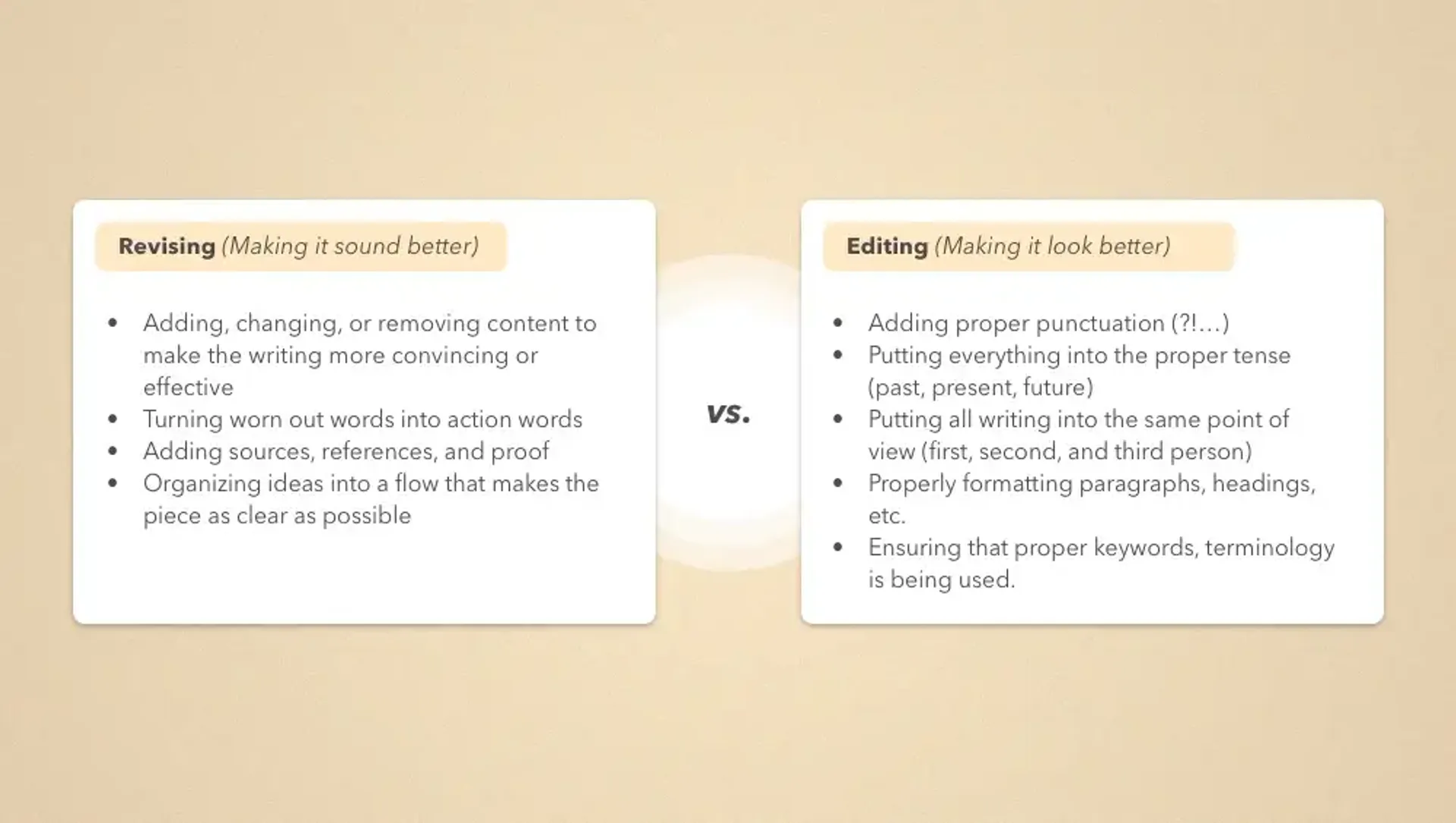1 days ago · 6 min read · Writing
Write A Winning Article in Less Than 10 Steps
A full-proof process for writing, editing, and publishing

Sitting in my living room, listening to the 15 year old talk to a fling on the phone, as the girlfriend watches some television I found myself thinking back to this Calvin and Hobbes strip. I’ve had an outline for this article sitting and collecting dust for weeks.
I realize Hobbes has it right. I was thinking too much. The reality is that writing an article isn’t that big of a deal, so you have no reason to just put your thoughts on the page, just like I am right now.
Here’s how I do it, in less than 10 steps.
1. Put It On Paper, and Be Honest
Before you can start writing, you need to put your thoughts on the page. This is because when you have all of the thoughts bouncing around in your head, you can’t really formulate good thoughts that lend themselves to written word.

Write down all of your ideas in a bulleted list. All of them. It doesn’t matter if they’re good, this is about getting them out of your head so you can think clearly.
Choose a start and an end. This is the idea you think you article should begin with, and the idea or question you want to pose at the end.
From your list, choose the ideas you want to keep. It’s much easier to decide what to keep than it is to decide what to discard.
Do your research*. Now that you’ve got your ideas on paper, organized, and cleaned up you can go and research with clarity. The idea here is to find original source material that support or illustrate your ideas.
* You wont always have to do research. If you’re doing an opinion piece, or a creative writing project, then you likely don’t need support. If you’re making any assertions however, I recommend you find some support!
2. Write Unabashedly
At this stage you’ve got an outline, and now you just need to expand your bullets into paragraphs! How hard can that be? If you’re shooting for 2500 words, write 3500.

Forget about spelling, grammar, flow, or anything that prevents you from writing. The goal is to let yourself be creative and to get the words out of your head and onto the page.
Exceed your word count by 30–50%. This helps bring your ideas to life and gives you plenty of room to cut and edit.
Forget about proper spelling and grammar. Letting words flow from your fingers is key.
3. Reshape and Revise Ruthlessly
It’s time to proofread your article. Note that revising and editing are not the same thing!

Tim Ferris shares a great formula for doing this in Tools of Titans, where you reshape for all three readers:
Reshape and revise for yourself. Go through your writing and ensure it speaks to you and conveys what you want it to convey. Cut anything that doesn’t fit.
Reshape and revise for your audience. Examine your writing as if it were written by someone else. Would you empathize with it? Would you want to listen to the writer and follow him on social media?
Reshape and revise for your detractors. Find places in your writing where internet trolls may be able to disagree with you or fact check you and do it in your writing. This way, you wont feel the need to answer their detractions as they happen.
In short, revise is done with the goal of ensuring you’ve expressed all of your thoughts to the reader while editing is done with the goal of ensuring your writing will have the most effective impact on the reader.
4. Walk Away

That’s right. Walk away from your writing. Take a two or three days to let the writing fade from your mind so that you may return to it with a fresh opinion, unclouded by your own aspirations and expectations for the writing. This will allow you to edit it with a keen eye.
5. Edit For Success
Now that you’ve separated yourself from the writing, you’re ready to prepare it for the limelight. In this stage, you’re going to properly edit your article.

Read it aloud. This allows you to be critical about the flow of the piece. Fix anything that feels awkward or bad to you when read aloud.
Spellcheck. Bad spelling just looks bad.
Run it through Grammarly. Grammarly is a tool that checks your writing for common grammar and syntactic mistakes. This is like handing your work over to a formal editor. (Warning: this not the equivalent of that. If you’re being paid for your writing, get a real editor!)
Run it through Hemmingway App. Hemmingway is a tool that aims to make your writing more easily read and more concise. Essentially it lets your know if you’ve written for your audience, and tells you how to get there if you haven’t. I recommend you figure out what your audience’s reading level is and edit towards that.
If you’ve got an editor, give it to her. While you’ve done a lot of hard work to make your writing the best you can be, she’ll always do a much better job.
6. Show It To Ten People You Trust
Now your writing is essentially ready. The final test of it’s mettle is showing it to people who will give it a pass or a fail.

Select up to ten people (minimum of two or three) that you trust and feel are already invested in your success.
If they share the article and/or give it high praise, you know you’ve written a winner.
If they have any small detractions or complaints, then you have an opportunity to edit for clarity.
If they really don’t like it, then maybe it just isn’t a winner and you should move on to the next idea.
7. Publish It To The World And Distribute
Now for the easy part! You can go ahead and publish it on your website, blog, or on Medium. Just two more small steps and you’re done:

Immediately schedule it to go out on social media with Buffer. Ensure you schedule it multiple times for a few weeks into the future to give it as much exposure as possible.
Share the post at online hangouts your audience frequents. This is a great opportunity to generate additional traffic and attract new visitors. Think Twitter, Facebook, Reddit, Slack, or any forums they may use!
Give yourself a pat on the back, you rock!
8. Return Later & Edit
Don’t treat old content as dead content. Your best performing content will always be old content. Something you post will resonate with a lot of people, and will always get traffic.
Make sure you always revisit your content pieces a few days to a few weeks after publication and make changes based on the feedback you’ve been graciously given from readers.
This will allow you to make it resonate with readers much more, and make it even more successful!